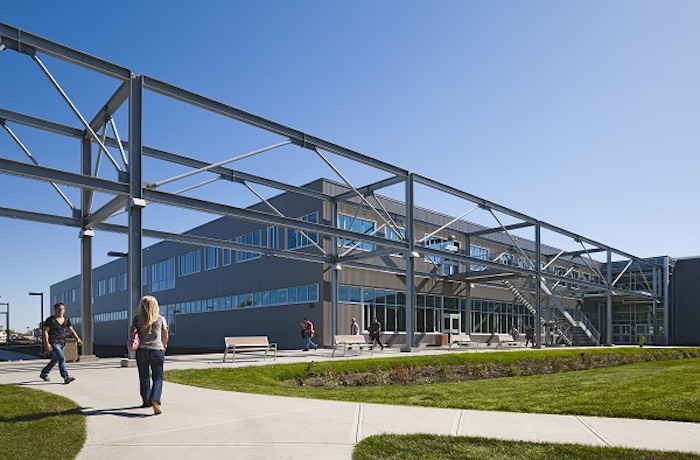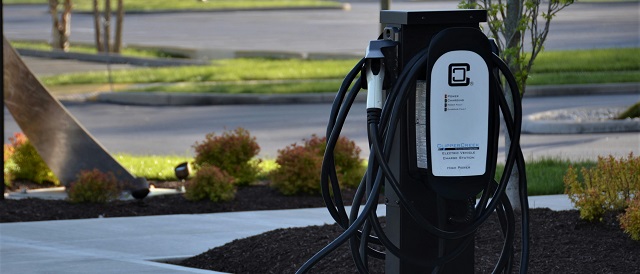Education
St. Patrick’s teacher honoured with prestigious Prime Minister’s Award For Teaching Excellence

From Red Deer Catholic Regional Schools
St. Patrick’s Community School is proud to announce that Mr. Michael Saretzky, a dedicated and visionary Grade 8 teacher, has been awarded the esteemed Regional Certificate of Achievement from the Prime Minister’s Award for Teaching Excellence in the Science, Technology, Engineering, and Mathematics (STEM) category. This prestigious award recognizes exemplary educators who have demonstrated outstanding contributions in fostering a culture of innovation crucial for Canada’s future.
Mr. Saretzky has been acknowledged for his exceptional commitment to enhancing STEM education while teaching Grade 6 at St. Patrick’s Community School. He was the driving force behind the establishment of the groundbreaking St. Patrick’s eSports Club, which evolved into a successful eSports Team—the first of its kind at Red Deer Catholic Regional Schools. Under Mr. Saretzky’s guidance, the eSports Team participated and excelled in numerous tournaments during the last school year.
At the Central Alberta Teachers’ Convention held last year, Mr. Saretzky eloquently elaborated on the benefits of eSports at a middle school level, emphasizing how this platform fosters critical skills and teamwork among students. His innovative approach to integrating technology and educational gaming has had a profound impact on the academic and personal development of his students.
Principal Mandy Reed of St. Patrick’s Community School commended Mr. Saretzky, stating, “Michael’s dedication to advancing STEM education through the establishment of the eSports club and team has been a true asset to our school community. His passion for nurturing innovative learning environments aligns perfectly with the ethos of St. Patrick’s Community School.”
Superintendent Dr. Kathleen Finnigan of Red Deer Catholic Regional Schools remarked, “We are incredibly proud of Michael Saretzky’s exceptional achievement and his efforts to enhance STEM education. His dedication to nurturing young minds in the STEM field sets an inspiring example for educators across our division.”
Board Chair Murray Hollman of RDCRS extended his congratulations, saying, “Michael Saretzky’s recognition with the Prime Minister’s Award for Teaching Excellence in STEM is a testament to his unwavering dedication to education and the remarkable impact he has made on his students and the entire school community.”
Mr. Saretzky’s achievement highlights the invaluable contributions of educators in shaping the next generation of innovators and leaders in Canada’s rapidly evolving technological landscape. St. Patrick’s Community School congratulates Mr. Michael Saretzky on this well-deserved honor and looks forward to witnessing the continued positive impact of his exemplary work.
Red Deer Catholic Regional Schools serves over 10,650 students in 21 schools in Red Deer, Blackfalds, Sylvan Lake, Rocky Mountain House, Innisfail, and Olds. It also supports the learning of over 850 students in a Home Education Program. The Division is committed to serving children and parents with a complete offering of learning opportunities delivered within the context of Catholic teachings and within the means of the Division.
Education
Schools shouldn’t sacrifice student performance to vague notions of ‘equity’

From the Fraser Institute
According to a new study published by the Fraser Institute, if Canada wants to remain competitive with emerging economies around the world, we must increase our math, science and reading scores—and not simply pursue high levels of “equity and inclusion” as the primary goal for our schools.
Indeed, highly equitable and inclusive schools—with declining PISA scores, as is currently the case in Canada—do a disservice to students and society at large.
Why? Because higher test scores translate into greater “knowledge capital”—that is, the full body of knowledge available to an economy—and boost economic growth (and, incidentally, the tax revenues that fund our schools).
Indeed, the goal should be equitable access to a quality education. And the most realistic and meaningful way to measure student progress is through PISA tests, which every three years assess the performance of 15-year-olds worldwide in core subjects of math, science and reading rather than the limited curriculum objectives used in provincial testing, which can only show progress or decline within individual school systems. In today’s world, where competition is truly global, we must know how our students and schools perform compared to their peers in other countries, especially the “Asian Tigers” of Hong Kong, Korea, Singapore and Tiawan whose rapidly growing economies have been driven by rising PISA scores.
Obviously, countries with higher test scores can teach other countries how to improve—although there are limits and some traps here. Attempting to cut and paste Singapore’s or Korea’s much more meritocratic systems of highly competitive student assessment and selection would be impractical and impolitic in Canada. Even so, policymakers should consider reinstating more meaningful meritocratic norms in Canadian schools to encourage and recognize academic achievement. Nothing succeeds like success, except recognized and rewarded success.
Closer to home, other provinces could benefit from considering why Quebec is such a stellar performer in math and why Alberta has the highest overall PISA test score average of all provinces.
But fair warning, recent attempts at school improvement in Canada show that top-down one-size-fits-all changes—including extending compulsory attendance, reducing average class size and tinkering with course content—have had little positive effect on student performance, although they may please teacher unions. If policymakers want to achieve more equitable success for more students, they should introduce more flexibility, school autonomy and choice into our top-heavy centrally regulated school systems. In this respect it may be no accident that the three highest performing, mid-spending provincial K-12 education systems (Alberta, Quebec and Ontario) offer relatively high levels of school choice, although of quite different kinds.
Equity and inclusion are noble goals, but they shouldn’t interfere with student progress. There’s too much at stake, for students and the country.
Author:
Alberta
Expansion planned for Centre for Innovation in Manufacturing at Red Deer Polytechnic

Investing in innovation at Red Deer Polytechnic |
Alberta’s government is expanding student capacity and creating a modern learning environment at Red Deer Polytechnic that will help graduates succeed in the economy of tomorrow.
To support emerging opportunities for students, Alberta’s government will invest $12.9 million to expand the Centre for Innovation in Manufacturing Technology Access Centre (CIM-TAC) at Red Deer Polytechnic (RDP). CIM-TAC is an applied research and innovation centre that gives companies access to state-of-the-art prototyping and manufacturing equipment, along with a multi-disciplinary team with the expertise to turn brilliant ideas into market-ready products.
As Alberta’s economy grows and diversifies, job creators will increasingly seek employees with the skills required to work in advanced manufacturing.
Construction will begin in early 2025 and will increase the centre’s applied research, education and training capacity. The expanded CIM-TAC will grow to provide work-integrated learning opportunities for an estimated 450 post-secondary students and training through workshops and events to an additional 2,000 students annually by 2030. Additionally, more than 500 junior and senior high school students will take part in dual credit programs at the CIM-TAC.
“Investing in this expansion of CIM-TAC will give students at RDP access to cutting-edge technology and skills to succeed in the economy of tomorrow. The strategic investments we’re making in Budget 2024 are part of a forward-looking path to support the goals of our post-secondary institutions, grow Alberta’s economy and create jobs.”
“The expansion will allow Alberta-based manufacturers across multiple sectors to have greater ability to develop, test and scale their ideas. Students will be engaged at the forefront of made-in-Alberta technologies and manufacturing solutions.This investment will help meet high demand from entrepreneurs and industry for applied research and will take the facility beyond its current capabilities to become an advanced technology training and hands-on learning centre.”
“This expansion project will build on the CIM-TAC’s 15 years of success and leverage the centre’s industry partnerships and manufacturing expertise to provide even more capacity for applied research, as well as education, training and work-integrated learning opportunities for students. We thank the Government of Alberta for this investment that will benefit not only RDP students and researchers, but also the entire central Alberta region and its critical industries like health care, agriculture, energy and construction.”
“Manufacturing and advanced manufacturing are driving job-creation, economic growth and made-in-Alberta solutions that improve the lives of people around the world and right here at home. The funding to expand RDP’s CIM-TAC is an investment that will allow Alberta companies greater access to the tools, technology and next generation of skilled talent that will allow our industry to solve real-world challenges, develop better products and ultimately increase productivity.”
Quick facts
- The expansion of CIM-TAC at RDP will support a variety of sectors through advanced manufacturing capabilities, including energy innovation, transportation, aviation and agriculture. The centre will also support RDP’s future expansion into more medical device manufacturing and health-care innovations to support both patients and providers.
- RDP’s expansion of the CIM-TAC will grow the facility’s footprint from 15,000 square feet to 25,000 square feet.
- The CIM-TAC currently houses $7.6 million of advanced manufacturing equipment.
- In 2022, RDP attracted more than $2 million in applied research investment. RDP also completed 64 projects for 57 companies and participated in more than 1,300 engagements with industry partners.
- Since the CIM-TAC’s inception in 2009, RDP has supported more than 300 industry partners (including repeat clients).
-

 Brownstone Institute1 day ago
Brownstone Institute1 day agoThe Predictable Wastes of Covid Relief
-

 Brownstone Institute1 day ago
Brownstone Institute1 day agoBook Burning Goes Digital
-

 John Stossel16 hours ago
John Stossel16 hours agoThe Swamp Survived: Why Trump Failed to “Drain the Swamp”
-

 Alberta1 day ago
Alberta1 day agoCanadian Christian chiropractor fights ‘illegal’ $65,000 fine for refusing to wear mask
-

 Media24 hours ago
Media24 hours agoCBC tries to hide senior executive bonuses
-

 conflict1 day ago
conflict1 day agoOver 200 Days Into War, Family Of American Hostage in Gaza Strives For Deal To Bring Son Home
-

 Energy17 hours ago
Energy17 hours agoU.S. EPA Unveils Carbon Dioxide Regulations That Could End Coal and Natural Gas Power Generation
-

 Automotive14 hours ago
Automotive14 hours agoNew Analysis Shows Just How Bad Electric Trucks Are For Business




